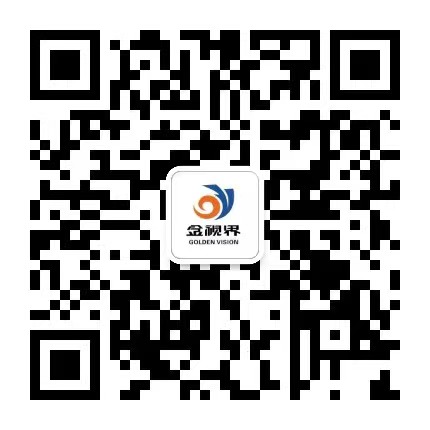Touch Screen TFT LCD: spiegazione della tecnologia capacitiva vs. resistiva
Sep 18, 2025
Benvenuti al Gvlcd blog, dove illuminiamo il mondo della tecnologia LCD. Come azienda leader Produttore di LCD TFTSappiamo che integrare un touchscreen è una decisione fondamentale che definisce l'esperienza utente di qualsiasi dispositivo. Due tecnologie dominano il mercato: capacitiva e resistiva. Scegliere quello giusto è essenziale per prestazioni, durata e costi. Questo articolo analizzerà le differenze tra condensatori capacitivi e resistivi. schermi LCD TFT touchscreen per aiutarti a fare la scelta perfetta per la tua applicazione. Come funziona un touch screen con un LCD TFT?Un touch screen è un pannello trasparente posizionato sopra un Schermo LCD TFTRileva la presenza e la posizione di un tocco all'interno dell'area di visualizzazione. Questo segnale viene quindi inviato al controller ed elaborato, consentendo all'utente di interagire direttamente con ciò che viene mostrato sullo schermo. Tecnologia touch resistiva: il cavallo di battaglia durevoleUn touchscreen resistivo è una tecnologia passiva costituita da due strati flessibili e trasparenti separati da una piccola intercapedine d'aria. Le superfici interne sono rivestite con un materiale resistivo (come l'ITO). Come funziona: quando si preme lo schermo, i due strati entrano in contatto nel punto preciso del tocco. Il controller rileva questa variazione di corrente elettrica e calcola le coordinate (X,Y). Metodo di attivazione: pressione di un dito, di una mano guantata, di uno stilo o di qualsiasi oggetto. Vantaggi principali: Conveniente: generalmente meno costoso da produrre. Elevata durata: resistente ai contaminanti superficiali come polvere, acqua e umidità. Flessibilità di input: può essere utilizzato con qualsiasi oggetto, ideale per ambienti in cui gli utenti indossano i guanti. Elevata precisione: ideale per input precisi con uno stilo. Considerazioni: Minore chiarezza: i molteplici strati possono ridurre la chiarezza ottica e la luminosità fino al 25%. Meno durevole: lo strato superiore flessibile può essere graffiato o forato da oggetti appuntiti. Nessun multi-touch: gli schermi resistivi standard solitamente registrano solo input single-touch. Tecnologia touch capacitiva: lo standard modernoUn touchscreen capacitivo è una tecnologia attiva. È costituito da un pannello di vetro rivestito con un materiale conduttivo trasparente (come l'ITO). Come funziona: mantiene una carica elettrostatica. Quando un oggetto conduttivo (come un dito umano) tocca lo schermo, assorbe una piccola quantità di corrente, creando una caduta di tensione. Il controller misura questa variazione da ciascun angolo dello schermo per individuare con precisione il punto del tocco. Metodo di attivazione: richiede la conduttività elettrica di un dito nudo o di uno stilo capacitivo specializzato. Vantaggi principali: Chiarezza superiore: offre un'eccellente trasparenza ottica e luminosità (>90%), per immagini più nitide. Maggiore durata: la superficie in vetro è estremamente resistente ai graffi e durevole. Supporto multi-touch: supporto nativo per gesti moderni come pizzicare per ingrandire, scorrere e ruotare. Eccellente sensazione al tatto: offre un'esperienza utente estremamente fluida e reattiva. Considerazioni: Costi più elevati: una tecnologia più complessa comporta un prezzo più elevato. Limitazioni dei guanti: non può essere utilizzato con un guanto standard o uno stilo non conduttivo. Sensibilità alle interferenze elettromagnetiche: può essere soggetto a interferenze elettromagnetiche in ambienti difficili. CaratteristicaTocco resistivoTouch capacitivoAttivazione tramite toccoPressioneConduttività elettricaMetodo di inputDito (guantato/nudo), Stilo, Qualsiasi oggettoDito nudo, Stilo capacitivoMulti-touchNo (tipicamente tocco singolo)Sì (supporto nativo)Chiarezza otticaInferiore (~75-80% di trasmissione della luce)Maggiore (>90% di trasmissione della luce)DurataBuono (superficie soggetta a graffi)Eccellente (superficie in vetro duro)CostoInferiorePiù altoResistenza aLiquidi, polvere, contaminantiGraffi, usuraIdeale perControlli industriali, Dispositivi medici, Sistemi POS, Ambienti difficiliSmartphone, tablet, elettronica di consumo, chioschi interattivi Come scegliere: qual è quello giusto per il tuo progetto?La scelta migliore dipende interamente dalle esigenze specifiche della tua applicazione e dall'ambiente. Scegli un LCD TFT touch resistivo se: I tuoi utenti indosseranno i guanti (ad esempio, operai, personale medico). Per un input preciso (ad esempio, acquisizione di firme, navigazione nei menu industriali) è necessario utilizzare uno stilo. L'ambiente operativo presenta elevati livelli di polvere, umidità o altri contaminanti. Il tuo progetto ha un rigoroso vincolo di budget. La funzionalità multi-touch non è un requisito. Scegli un LCD TFT touch capacitivo se: Stai progettando un prodotto rivolto al consumatore, per il quale l'aspetto e la sensazione al tatto sono essenziali. L'interfaccia richiede gesti multi-touch (pizzicamento, zoom, scorrimento). La nitidezza delle immagini, la luminosità e la vivacità dei colori sono le massime priorità. L'input primario sarà dato da un dito nudo. Hai bisogno di una superficie in vetro altamente durevole e antigraffio. Conclusione: collaborare con l'esperto giustoSia la tecnologia resistiva che quella capacitiva hanno il loro giusto posto nel mondo dei display LCD TFT. Comprendere le loro differenze fondamentali è il primo passo per una progettazione di prodotto di successo. Noi di Goldenvision non forniamo solo display: forniamo soluzioni. I nostri esperti tecnici possono guidarvi in questo processo di selezione, aiutandovi a scegliere la tecnologia touch perfetta per la vostra specifica applicazione, che si tratti di un robusto HMI industriale o di un'elegante interfaccia consumer.

